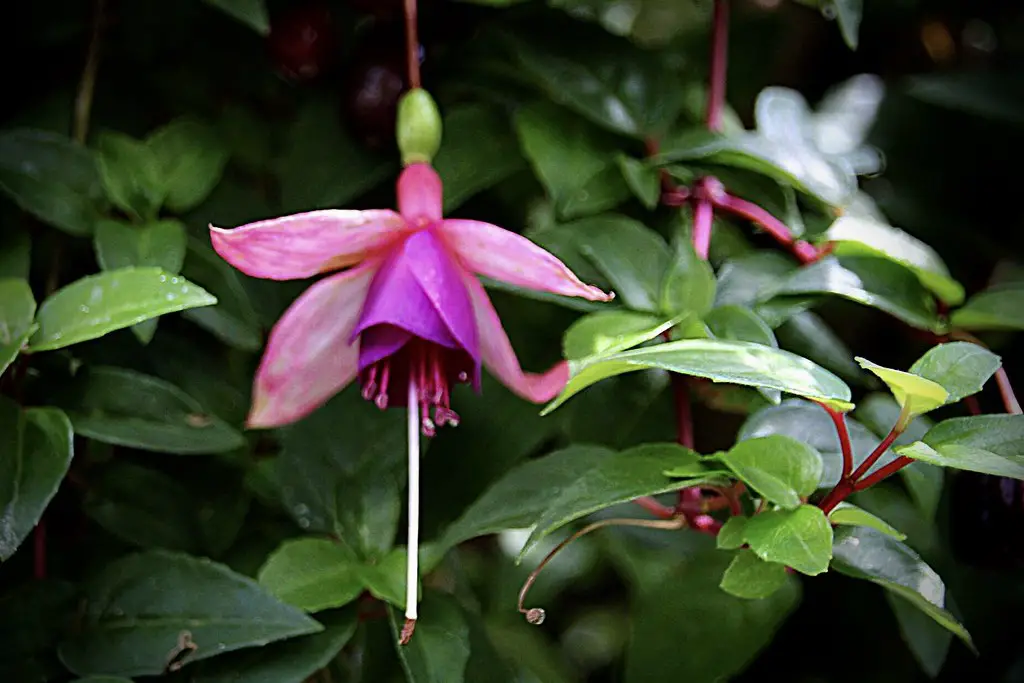Fuchsia is a genus of flowering plants known for their ornamental beauty. With pendulous teardrop flowers and rich hues of pink, purple, red, and white, Fuchsia plants are an eye-catching addition to any garden or balcony. Native to Central and South America, New Zealand, and the West Indies, they comprise more than 100 species, each having unique features and characteristics.
These plants, named after the German botanist Leonhart Fuchs, are particularly cherished for their hardiness and adaptability. Fuchsia flowers often blossom from early summer until the frost arrives, providing an extended season of color and life to the garden. They are a favorite among hummingbirds, butterflies, and garden enthusiasts alike.
Fuchsias are versatile and can be grown as shrubs, small trees, or trailing plants in hanging baskets. They are a popular choice for borders and container gardening, and with proper care, they reward gardeners with a prolific display of blossoms.
| Attribute | Details |
|---|---|
| Common Names | Fuchsia |
| Botanical Name | Fuchsia spp. |
| Family | Onagraceae |
| Plant Type | Perennial, shrub |
| Mature Size | 1 to 15 feet (depending on species) |
| Sun Exposure | Partial shade |
| Soil Type | Moist, well-drained soil |
| Hardiness Zones | 6-9 |
| Native Area | Central and South America, New Zealand, West Indies |
Fuchsia Care
Fuchsia plants are renowned for their beauty and relative ease of care. They thrive best in mild temperatures and partially shaded locations, away from scorching sun and strong winds. Regular watering and feeding, along with proper pruning, will help maintain healthy growth and an abundance of blossoms.
One of the key considerations for growing Fuchsia is to provide a suitable environment that mimics their native habitat. While they are adaptable, an understanding of their preferred conditions will result in a healthier and more vibrant plant.
Light Requirement for Fuchsia
Fuchsia plants prefer bright, indirect sunlight or dappled shade. Direct exposure to harsh afternoon sun may cause leaf scorching and reduce flowering. Eastern or northern-facing locations are usually ideal for these plants.
Soil Requirements for Fuchsia
A rich, moist, well-drained soil that retains moisture but is not waterlogged is best for Fuchsia. A mixture of garden soil with some organic matter like compost or peat moss will provide the needed nutrients and aeration.
Water Requirements for Fuchsia
Fuchsias require consistent watering to keep the soil evenly moist. Avoid letting the soil dry out completely, but also take care not to overwater as it can lead to root rot. Adjust the watering frequency based on weather conditions, more during hot periods and less during cool or rainy seasons.
Temperature and Humidity
Fuchsias thrive in temperatures ranging from 55-75°F and enjoy high humidity. They may require protection from extreme heat or cold, and misting the plants or providing a humidity tray can help maintain optimal moisture levels in dry indoor or outdoor conditions.
Fertilizer
Fertilize Fuchsia with a balanced, water-soluble fertilizer every 2-4 weeks during the growing season. Avoid over-fertilizing, as too much can cause salt buildup and reduce flowering.
Pruning Fuchsia
Pruning Fuchsia in early spring can help shape the plant and promote bushier growth. Regular deadheading of spent flowers will also encourage continuous blooming.
Propagating Fuchsia
Fuchsia can be propagated through softwood cuttings taken in spring or summer. Place the cuttings in moist potting soil and keep them in a humid environment until rooted.
How To Grow Fuchsia From Seed
Growing Fuchsia from seed can be more challenging and time-consuming but is achievable with patience. Sow seeds indoors in late winter using a seed-starting mix, and maintain warmth and humidity until germination.
Common Pests & Plant Diseases
Aphids
Aphids can be controlled with insecticidal soap or neem oil.
Fuchsia Gall Mite
Fuchsia Gall Mite can distort growth and should be treated with miticides.
Rust
Rust is a fungal issue that can be managed with proper spacing and fungicides.
Common Problems With Fuchsia
Wilting
Wilting may result from over or underwatering. Check soil moisture and adjust accordingly.
Bud Drop
Bud drop can be caused by sudden temperature changes, over-fertilizing, or incorrect watering. Adjust care practices as needed.
Pro Tips
- Choose the right location with dappled sunlight or partial shade for optimal growth.
- Maintain consistent moisture levels, especially during hot weather.
- Deadhead spent blooms regularly to encourage continuous flowering.
- Protect from extreme temperatures by bringing containers indoors or providing shelter.
- Experiment with different species and hybrids for varied growth habits and flower colors.




